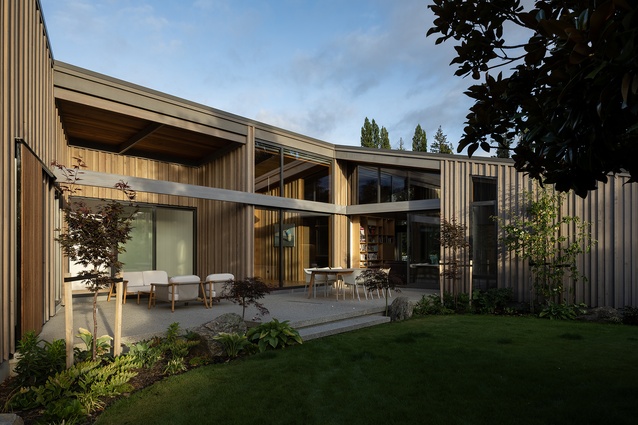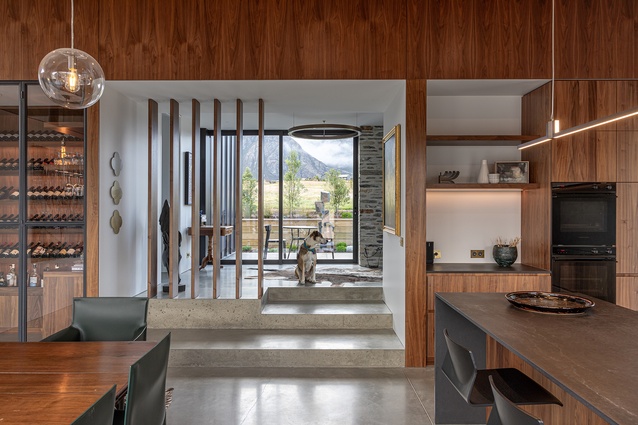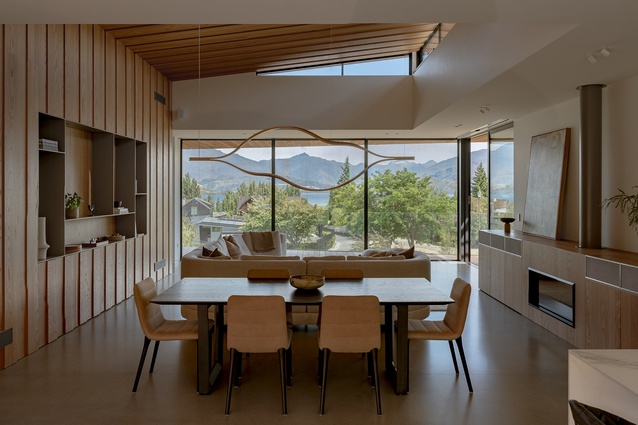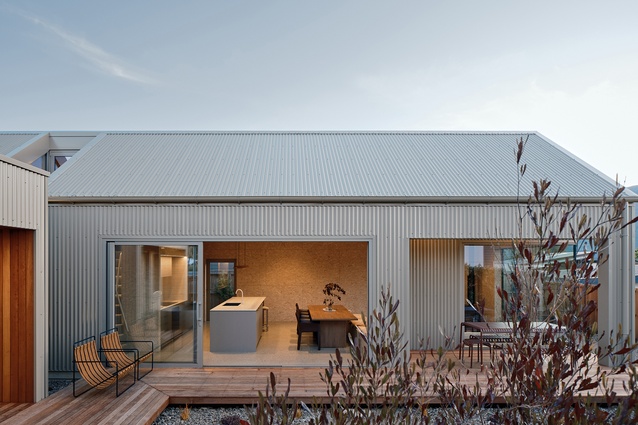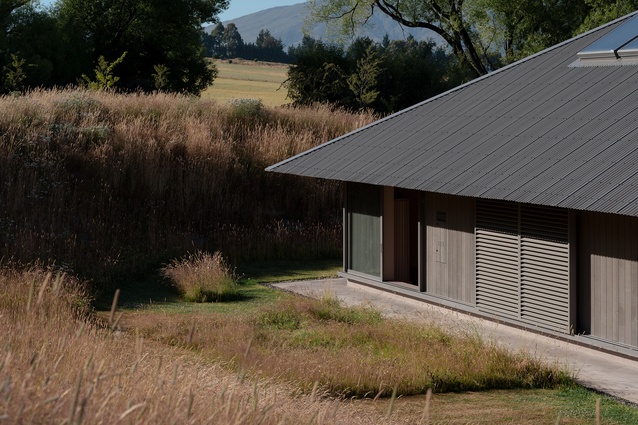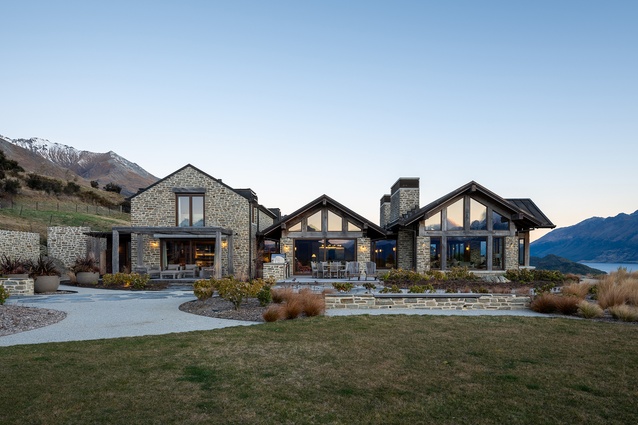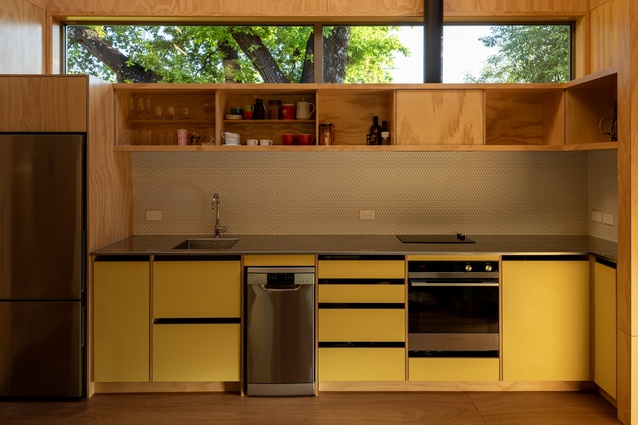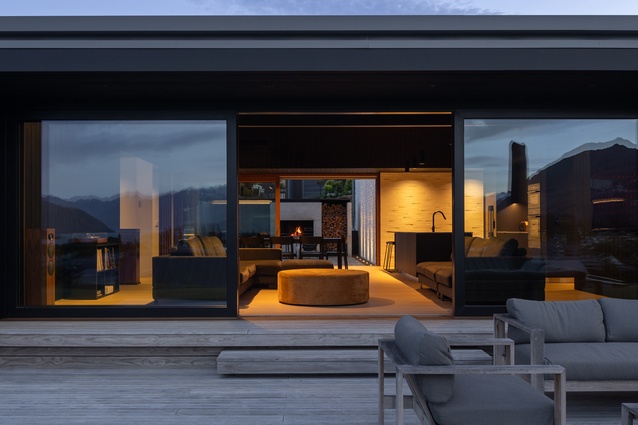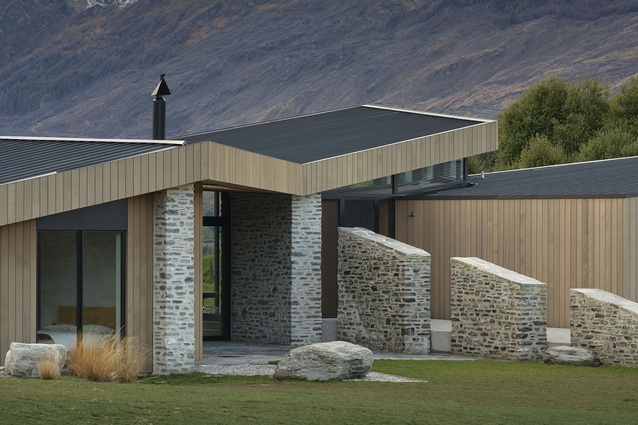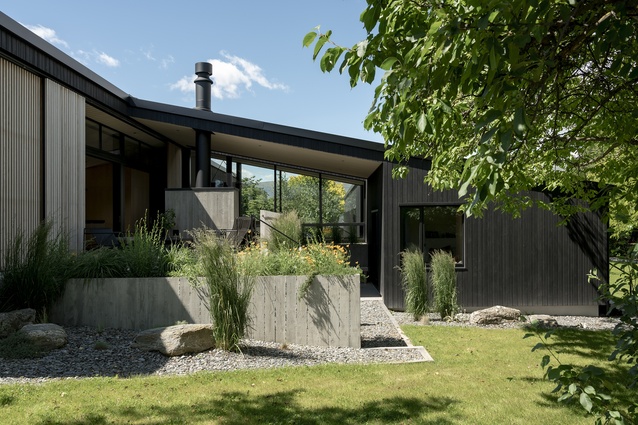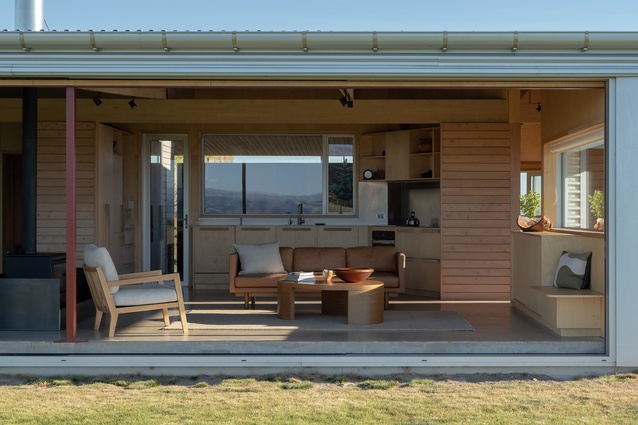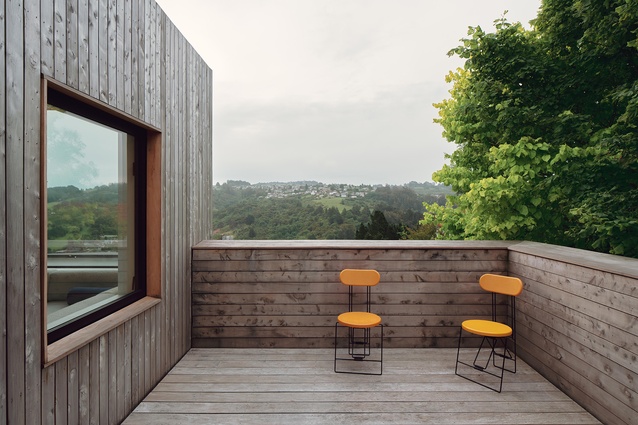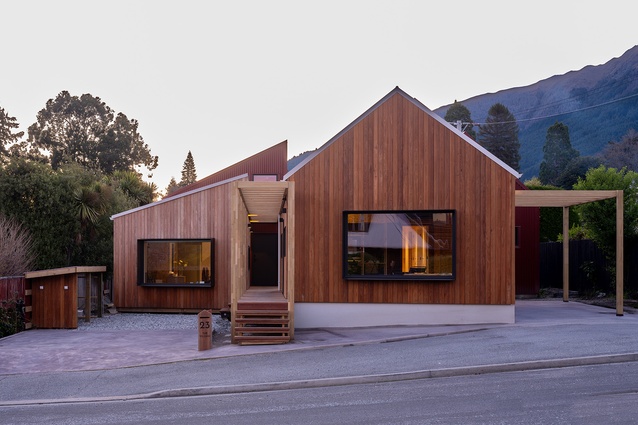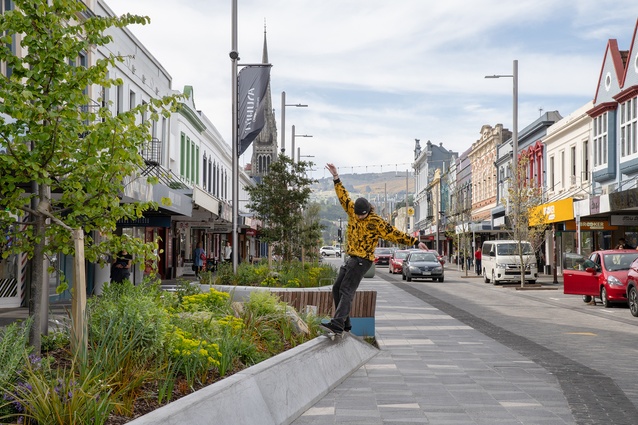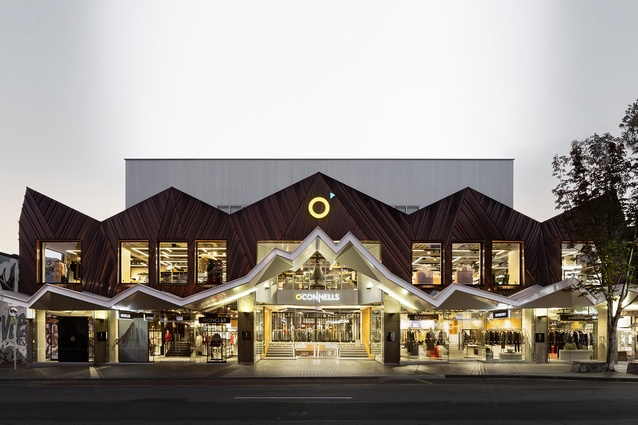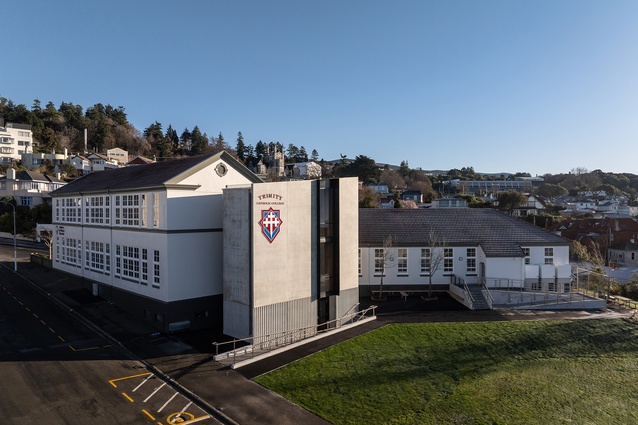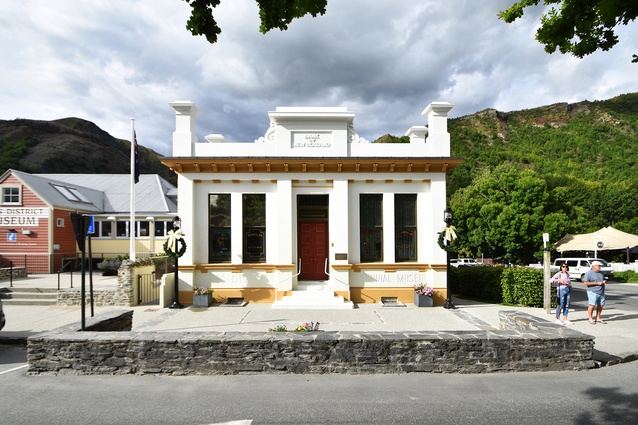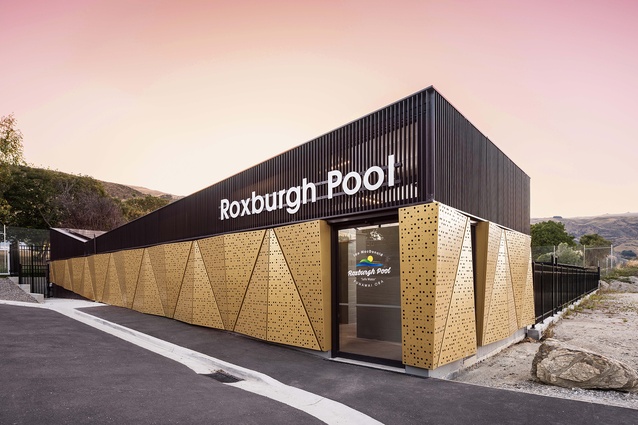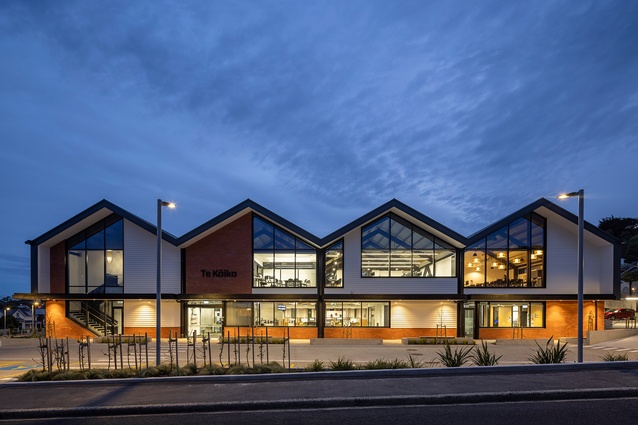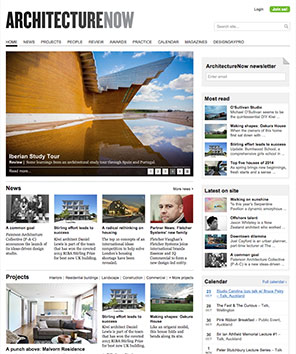Winners revealed: Southern Architecture Awards 2025
Nineteen architectural projects were awarded in Te Kāhui Whaihanga New Zealand Institute of Architects’ Local Awards for the Southern region this year, including community pools, a retail precinct in urban Dunedin, and nearly a dozen homes across Otago.
The Roxburgh Pool by Hierarchy Group was a winner in the Public Architecture category for seamlessly blending practicality, sustainability, and sculptural design into the riverside facility for a small community in Central Otago. Jurors noted how the simple geometry of the changing pavilion complemented the rugged Teviot Valley landscape, while the golden hue of the faceted screen served as a year-round reminder of autumn colours.
On a larger scale, the George Street, Dunedin Retail Quarter by Jasmax won the Planning & Urban Design category for a project that began as an infrastructure upgrade but became an ambitious initiative to revitalise the city’s retail quarter. Working in collaboration with Kāi Tahu, the project aimed to make mana whenua history and narratives visible within the retail quarter, offering a more authentic representation of Dunedin’s cultural history beyond its widely recognised colonial architecture.
“The jury was particularly impressed this year with projects that demonstrated innovation, whether that was new ways of working or use of new technologies,” says jury convenor and architect Mark Mawdsley. “The new sustainability judging criteria added this year helped us uncover projects with high-performance building envelopes, use of electric power technologies, and an emphasis on sourcing low-carbon or local materials. The best of the high-performance homes we saw were around ten times more energy efficient than a typical home built to code.”
The jury awarded 11 homes in the Housing category this year, with an emphasis on projects that connected to the landscape and took advantage of the natural beauty the region is known for. From rural Lawrence to the top of the Crown Range, the number of winners in this category reinforces the renown of Otago as an ideal canvas for architects to express their design creativity and artistry.
In Commercial Architecture, the upgrade to the O’Connells building by McAuliffe Stevens was recognised for injecting energy into the retail landscape of central Queenstown. In addition to seismic strengthening, colourful interior updates and new visual connections at ground level are complemented by the façade and canopies that reference the surrounding jagged landscape.
Mawdsley was joined on the jury by Geoff Lentz (Paua Architects), Tim Ross (Architype) and lay juror Sarah McCallum (Otago Polytechnic School of Architecture).
The winners received their awards at an event at the Cargo Collective Brew Hall on 13 June.
Housing
Roger’s House by Anna-Marie Chin Architects (Wānaka)
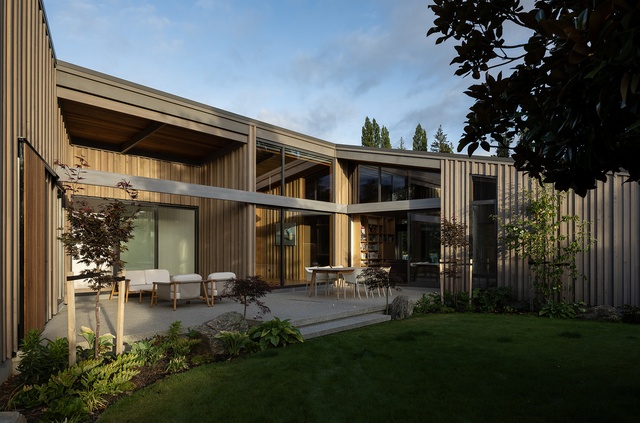
Situated on a lakefront site in Wānaka, Roger’s House takes inspiration from mid-century design. Anna-Marie Chin Architects utilise simple geometric forms and expressed timber structure to create a home that demonstrates a crisp aesthetic and welcoming spatial qualities. The architects have responded to site constraints in duality; an outdoor space, sheltered by the building form within the site, allows for an uncluttered view of the lake; and the internal transom windows allow interior spaces to borrow sunlight while improving the legibility of mid-century influences. An oversized entry door, dappled light filtering through screens, and external cladding that extends through the interior space demonstrate well-considered details that elevate the experience of this home.
Curio by Ben Hudson Architects (Queenstown)
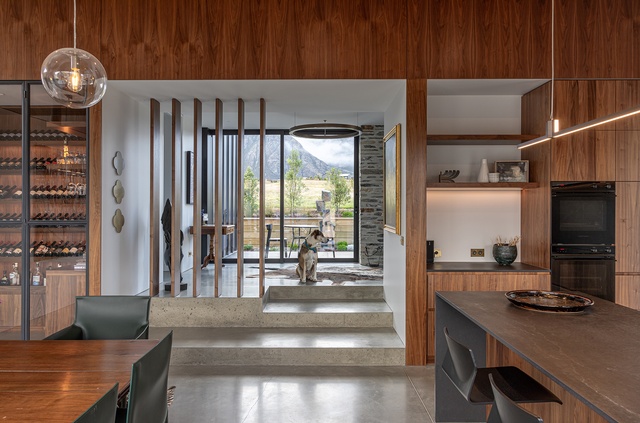
This meticulously crafted home offers a refined and deeply personal architectural response to site and suburban context. Organised by two gabled forms that separate public and private spaces, the design thoughtfully navigates a sloping section while maintaining a modest rural vernacular presence. Internally, the home is composed of gallery-like spaces that celebrate the owners’ passion for art, with a palette of warm timber, concrete, and white finishes enhancing the curated atmosphere. Immaculate detailing and a high-performance thermal envelope underscore the project’s commitment to both comfort and craftsmanship.
Penrith Peaks by Condon Scott Architects (Wānaka)

The bold and expressive form of Penrith Peaks skilfully contrasts strong horizontal lines with a soft curve, and transparency with closed recessive elements. The dwelling presents as a refined object in its suburban setting and the design gestures are well executed. Careful arrangement of both interior and exterior space in response to the site constraints allows a constant visual connection with the landscape. A combination of crafted details, expressed materials, and subtle textures create a sense of joy when moving through the house.
Scout by Intuitive Architects (Wānaka)
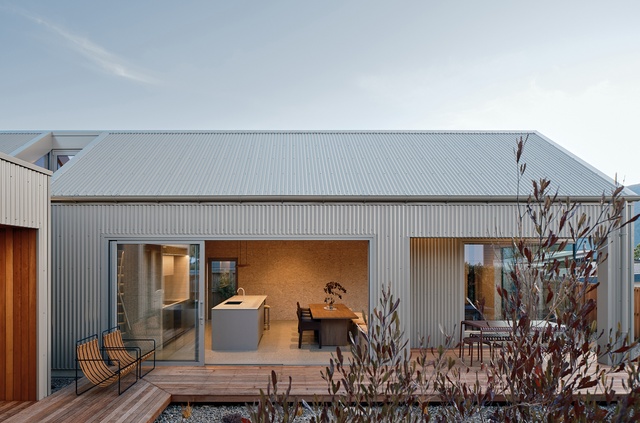
Adopting a vernacular aesthetic and simple form, this exemplary dwelling on a modestly sized site has been cleverly crafted to recede into its suburban context. The architect’s collaboration with an interior designer client is evident in the inspired choices of materials and refined detailing. Double-height living areas contrast low-height areas, and the skilful manipulation of volume accommodates a mezzanine, recessed balcony, and rooms that overlook negative space. The interior of the house is understated, as in the blond wood panelling without jambs or expressed jointing, which delivers a level of sophistication that transcends the modest material.
Openfield House by Keshaw McArthur and Matheson Whiteley in association (Arrow Junction)
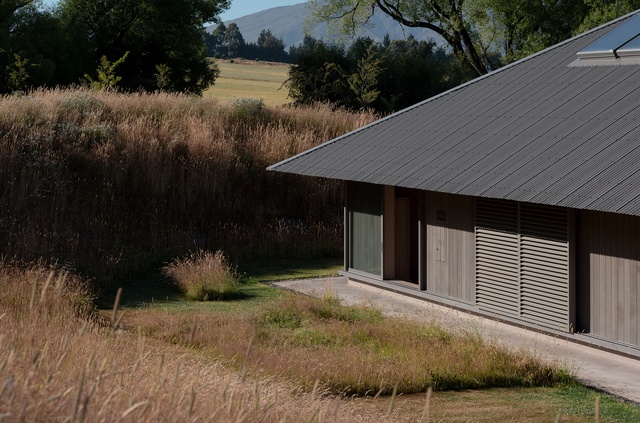
Conceived as a pyramidal form on the Crown Range terrace, this home sits in deep conversation with the vast surrounds. Square in plan, the grid of spaces dissolve into each other through sliding pocket doors, just as the façade dissolves itself by way of a system of sliding doors and screens. A large circular window punctures the corrugated roof in the upstairs bedroom, the primary source of light. The architects have executed the concept to a high level of detail throughout; the dialogue between form, structure, materiality and objects within the continuous field is both rigorous and restrained, with the landscape and weather offering dynamic changes in light and atmosphere.
Manukard Gård by Mason & Wales Architects (Queenstown)
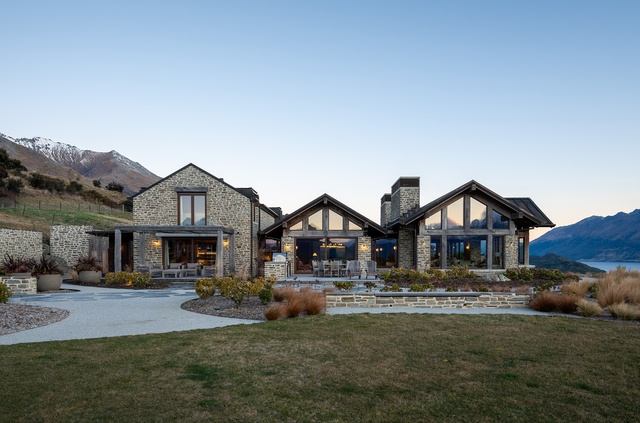
Manukard Gård is a generous and luxurious residence with a resolute expression of natural materials and traditional aesthetic. The success of the relationship between architecture and the environs is twofold; the siting, form, and materiality enables this substantial new construction to quietly contribute to the expansive Wakatipu landscape, while the interior spaces engage with monumental vistas. Mason & Wales, in collaboration with Cassells Green Interiors, have composed an informal series of spaces that allow for gathering, wellness, and retreat, all with a focus on elegance and comfort.
Kaka Pod by Rafe Maclean Architects (Wānaka)
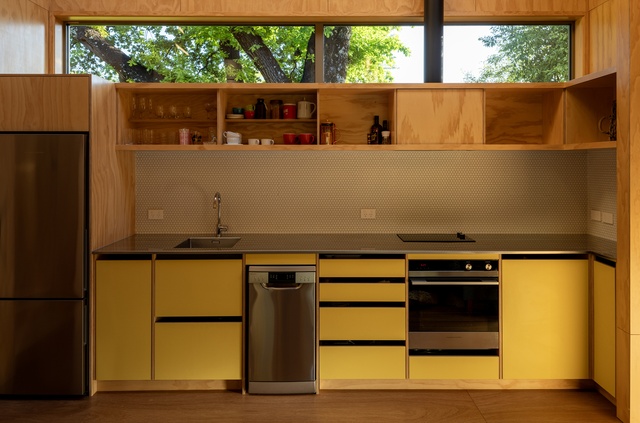
This sixty-square-metre double-height holiday house is a cavernous space, generated by a triangular plan and curved corners. One voluminous space of four levels within the pod trip down the site, traversing existing site services and boundary setbacks to nestle the pod amid trees and the bush-clad site. Positioned opposite an existing house which shares the same architectural DNA, complementary sheathing and subtle colour ensure that they are diffused into the native planting. Ladder access, roof light and joinery are skilfully detailed in a modest palate of materials, deferring to the power of the single space with alcoves. This is a beguiling retreat for a holiday adventure.
Brick House by Rafe Maclean Architects (Wānaka)
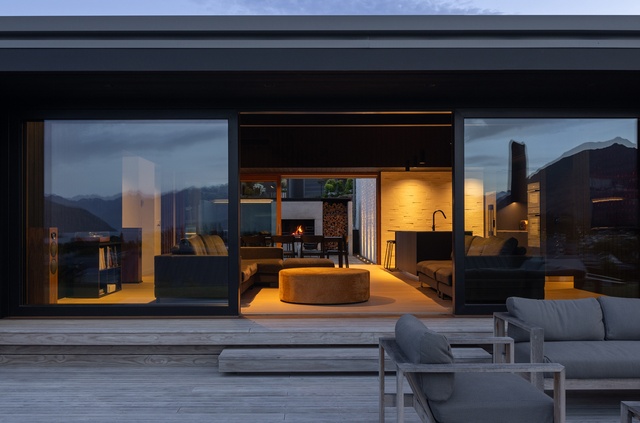
Brick House is a rich and architecturally sophisticated response to an outstanding Wānaka site and an exacting client brief. The house is characterised by the careful balance of contrasting qualities; light and dark, texture and smoothness, daylight and shading. Innovative spatial planning combined with technically imaginative construction detailing has resulted in a home which expertly balances world-class energy efficiency with outstanding architectural authenticity.
Kārearea House by RTA Studio
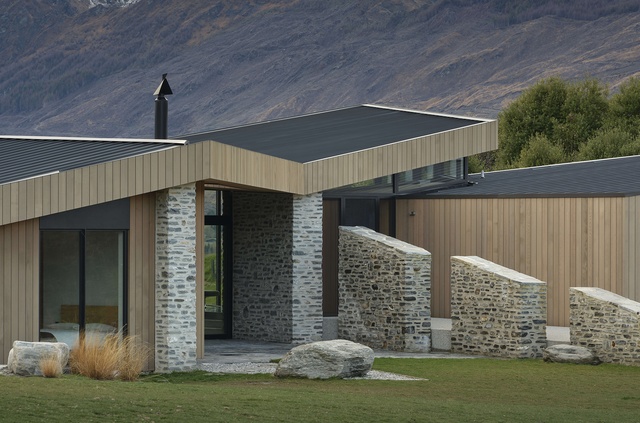
Kārearea House manipulates linear plan and form to create a dynamic architectural expression. Interior spaces are refined and sophisticated, the overall form creating intriguing variations in the volume of interior spaces. Extended stone walls strengthen the visual connection between enclosed space and the wider landscape. A minimal aesthetic elevates the restrained palette of natural materials, the masonry a refreshing combination of local schist and river stone. Detailing and joinery throughout the home has been thoughtfully detailed and expertly crafted.
Beacon Point House by RTA Studio (Wānaka)
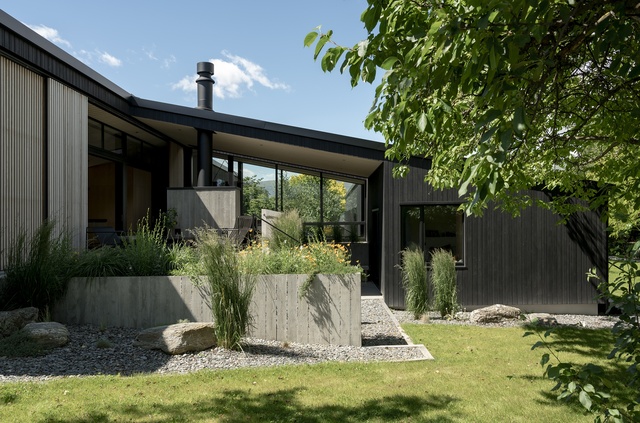
In a location often bound by attempts to capture expansive mountain views, Beacon Point House provides a refreshing contrast by nestling itself into the established landscape. The relationship with a former dwelling on the site built by the client’s father is evident in the new forms, which appear deceivingly modest from the street but expand inwards to hug a central terrace. Materiality has been approached with restraint, with the black-stained exterior timber contrasting the warmth of the interior palette.
Glenayr Farm House by Vaughn McQuarrie (Lawrence)
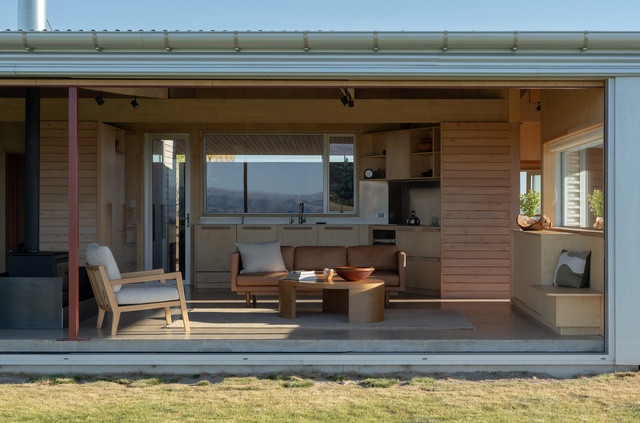
A simple shed-like structure embedded at the crest of a rolling hills landscape. A functioning farmhouse, including studio and shed, are arranged under a single roof structure. Minimal separation and walls between spaces makes them feel more like alcoves radiating into the landscape. Emblematic of the simplicity is the clever dissolving of thresholds, like the sunken bath which feels integral with the pasture. Similarly, the front threshold of the house has no deck or paving to intercede with grass. The sliding door frame is suspended past the slab edge to offer the sill as the step. This house celebrates a close collaboration not only with its clients, but with the local tradesmen/craftsmen. What better accolade for this house than the manifest joy of the clients.
Housing – Alterations and Additions
Weather Watcher by ahha (Dunedin)
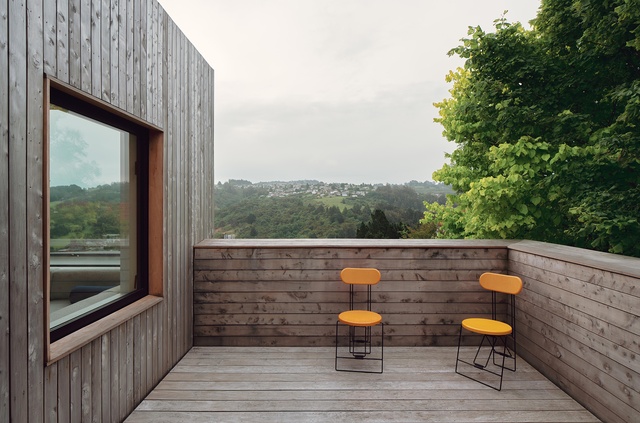
Having lovingly and impeccably restored an existing double bay villa, this designer/client has created a living area extension to the rear of the restoration. Flawless transitioning is achieved in an exciting modern living space, brimming with innovative and bespoke detail. The curvilinear is expertly conscripted in places such as the curved wall to form a sculptural box window jamb as an expression of continuous view. Astonishingly the client not only designed this project but was largely responsible for building the meticulously constructed joinery. The project demonstrates an aspirational yet pragmatic approach to reducing environmental impact.
Housing – Multi Unit
The Village by Arête Architects (Queenstown)
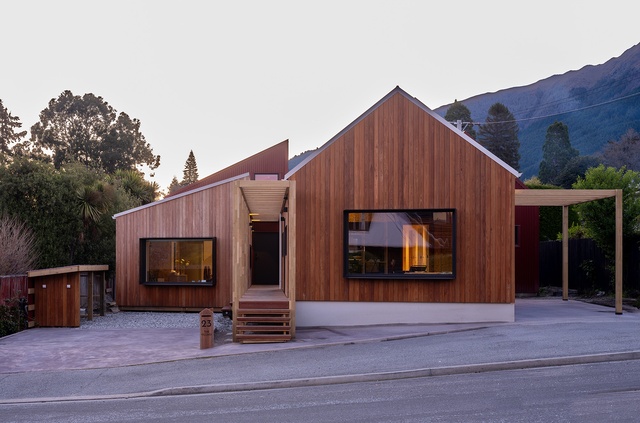
The Village reimagines a typical suburban site with two separate dwellings designed specifically for multi-generational living. Demonstrating a collaborative approach between the architect and client, the project sought to minimise construction waste and reused materials salvaged from the former cottage. The brief also required that existing cottage was retained on site while the first of the new dwellings was constructed, a significant constraint that the architect resolved in the design of the project. Each dwelling, one more modest in scale than the other, has been arranged so that selected spaces overlap and enable interaction between occupants. The composition of materials successfully balances sustainability aspirations, durability objectives, and the desire for a warm aesthetic.
Commercial Architecture
O’Connells by McAuliffe Stevens (Queenstown)*
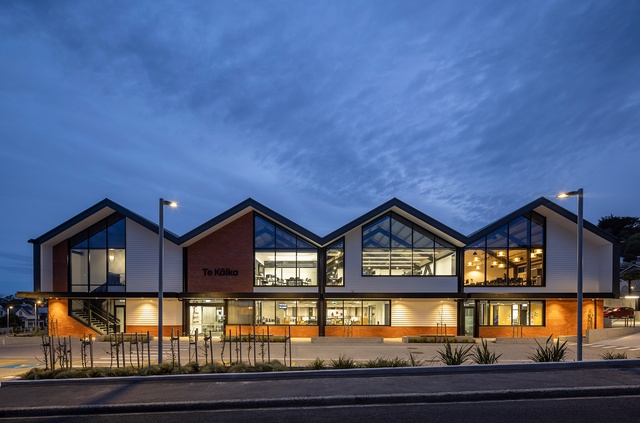
This bold, confident upgrade to the existing O’Connells building provides an exuberant injection of energy to the existing retail landscape in central Queenstown. The project involved a complex regeneration of the 1980s shopping centre to improve seismic strength, durability, accessibility to the street, and operability for tenants. The new façade is highly permeable along three frontages at ground level, providing visual connection right through to the central atrium and ground-level food hall. Contrasting this, the façade and canopies above reference the jagged landscape beyond. Interior detailing continues the narrative through a carefully articulated palette in common areas, and playful use of colour in the bathrooms and stair areas. This is a project that is both inspired by, and gives back to, its unique context.
Resene Colour Award Citation:
O’Connells celebrates colour. The visitor experience is elevated through the unexpected use of playful colours in interior spaces. Vertical circulation is enhanced by a multitude of paint colours, selected to both complement and contrast over the levels. The escalator, colour drenched in vermillion red, is a vivid take on wayfinding and vibrant tile finishes in the bathrooms energise otherwise functional spaces.
Education
Trinity Catholic College Music and Art Suites by McCoy and Wixon Architects (Dunedin)
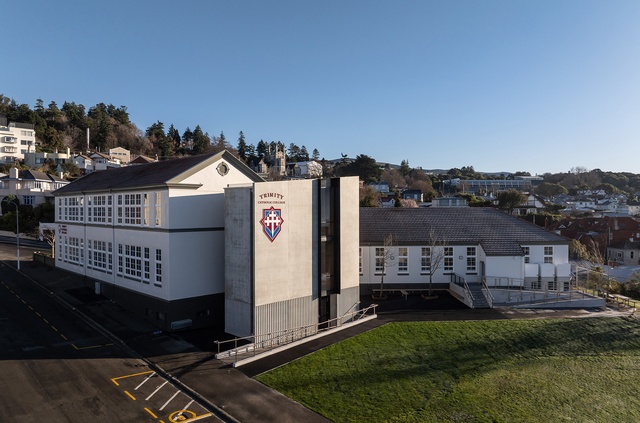
This adaptive reuse of a historic building with a rich cultural history in arts education has generated an inspiring music and art facility for the Catholic Diocese and Trinity College. Careful upgrades of the historic building include seismic strengthening, improved compliance, and reinstatement of missing timber window joinery. Challenging requirements for acoustic control within the 1930s timber structure were navigated with both sensitivity and expression to achieve necessary isolation between learning spaces, which also include a recording studio in the basement. The new lift and stairs lined in a warm timber is reminiscent of a crafted instrument. The project has created modern learning spaces that foster student creativity within a cultural and historically significant context.
Heritage
The Lakes District Museum by Origin Heritage (Arrowtown)
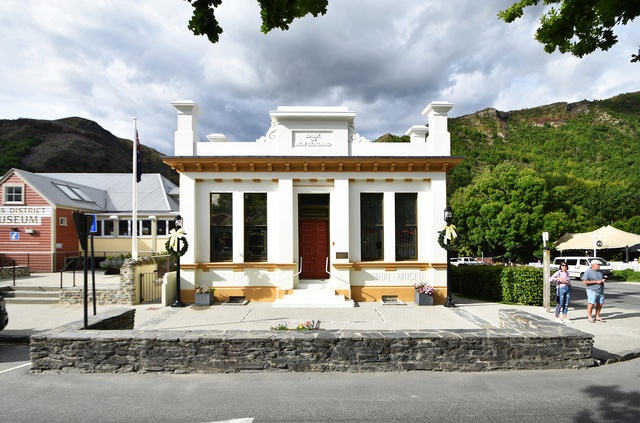
The Lakes District Museum exemplifies sound conservation methodologies and demonstrates the collaborative efforts of the client, architect, engineer, and tradespeople. An innovative approach to seismic strengthening, the catalyst for initiating the project, ensured that the necessary structural interventions are discreet. The reinstated parapet revives the original design intent of R.A. Lawson and significantly enhances the external appearance of the building. A reconfigured display space smartly incorporates a new lift that improves accessibility for the overall museum facility. Restoration of the Lakes District Museum is a testament to the expertise and dedication of all involved and has enhanced Arrowtown’s historic streetscape.
Planning & Urban Design
George Street, Dunedin Retail Quarter by Jasmax (Dunedin)
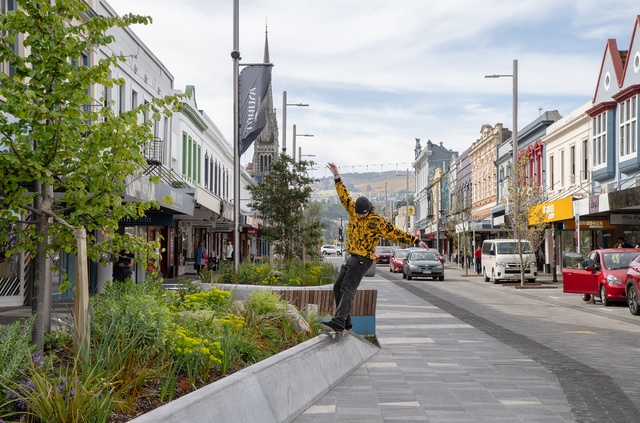
This revitalisation of inner-city Ōtepoti Dunedin, spurred by the need to replace ageing underground infrastructure, is the largest and arguably most significant urban project within the city in recent history, and the project delivery team’s collaboration with Kāi Tahu partners has proved a sound example of co-design in action. The work was underpinned by a key goal of making visible of mana whenua history and narratives within the retail quarter, thereby offering a more authentic representation of Dunedin’s cultural history beyond its widely recognised colonial architecture. This manifests throughout the site in the weaving of narratives through bespoke paving, cultural markers, artwork, planting and bilingual signage, resulting in a precinct that is now universally accessible, inclusive, and speaks to Dunedin’s identity.
Public Architecture
Roxburgh Pool by Hierarchy Group (Roxburgh)
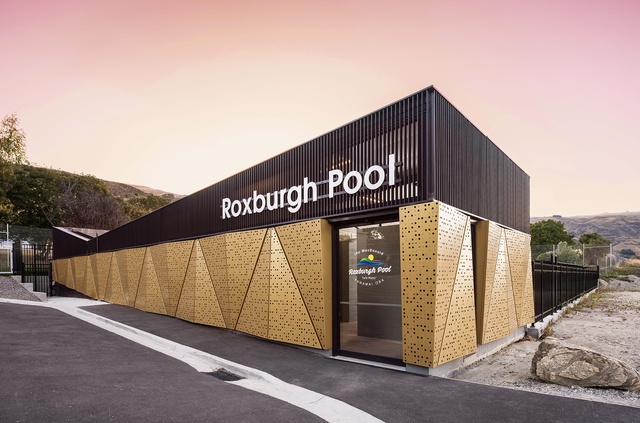
The Roxburgh Pool seamlessly blends practicality, sustainability, and sculptural design gestures. The facility comprises three separate pools, a changing pavilion, and a shade structure, and successfully realises the goal of reducing operating costs for the community. A shade structure utilises a semi-transparent solar panel array to create a soft, dappled light below; a demonstration of infrastructure designed in a way that enhances the experience of the place. Simple geometry of the changing pavilion beautifully complements the rugged Teviot Valley landscape, while the golden hue of the faceted screen serves as a year-round reminder of the autumn colours.
Te Kāika Wellbeing Hub by McCoy and Wixon Architects (Dunedin)

The result of a visionary brief, Te Kāika Wellbeing Hub provides a place for multiple agencies to demonstrate an innovative collaborative approach to caring for their community. The design combines the traditional gable form of a wharenui with materials typical of the surrounding residential context to provide a sense of comfort and familiarity. Spatial planning and use of robust materials successfully balance the aspiration for engagement and connection with the requirement to provide retreat space. A welcoming interior environment has been created by a combination of warm interior finishes, expressed structure that highlights the gabled roof form, and an openness between work and communal zones.
About Te Kāhui Whaihanga New Zealand Institute of Architects
Te Kāhui Whaihanga New Zealand Institute of Architects is a membership-based professional organisation that represents more than 90 percent of registered architects in Aotearoa and promotes architecture across the country.
First established in 1905, the Institute currently has more than 4,000 members. Approximately 50 percent are registered architects working in New Zealand, with the balance of membership made up of New Zealand architects working overseas, architectural graduates, architecture students, teachers of architecture and retired architects.
About the awards
The Local Architecture Awards is a peer-reviewed programme run by Te Kāhui Whaihanga New Zealand Institute of Architects in association with Resene and APL. Visit the website for more details.

